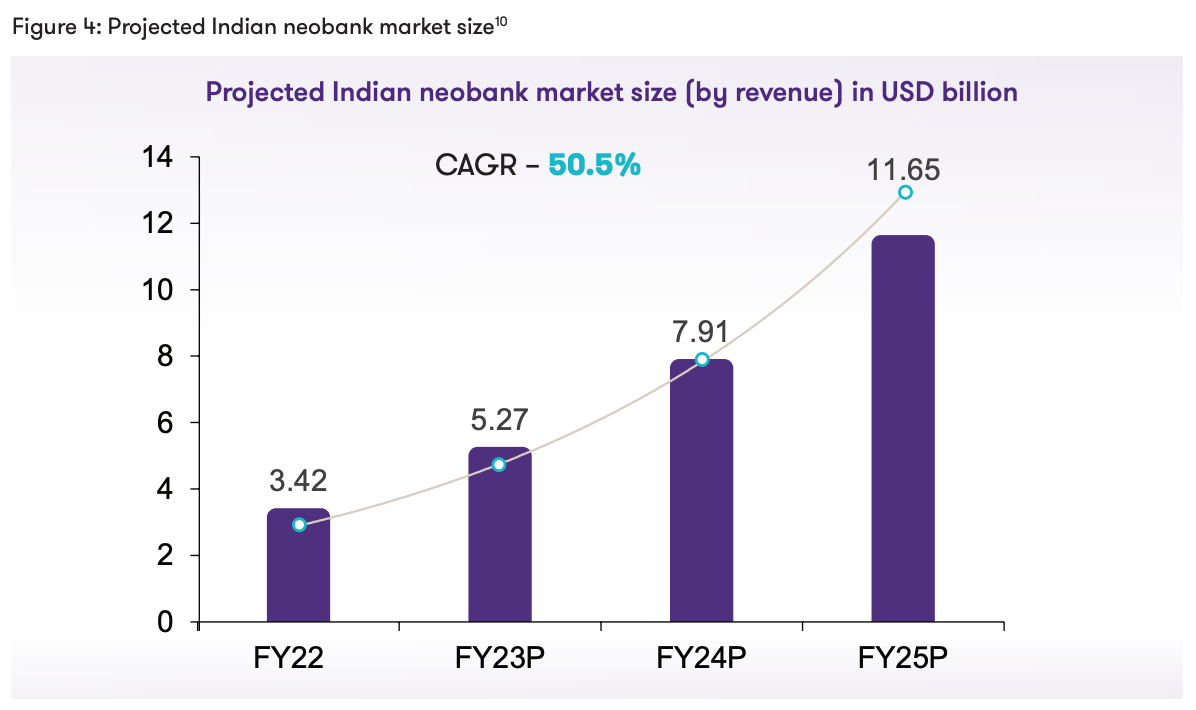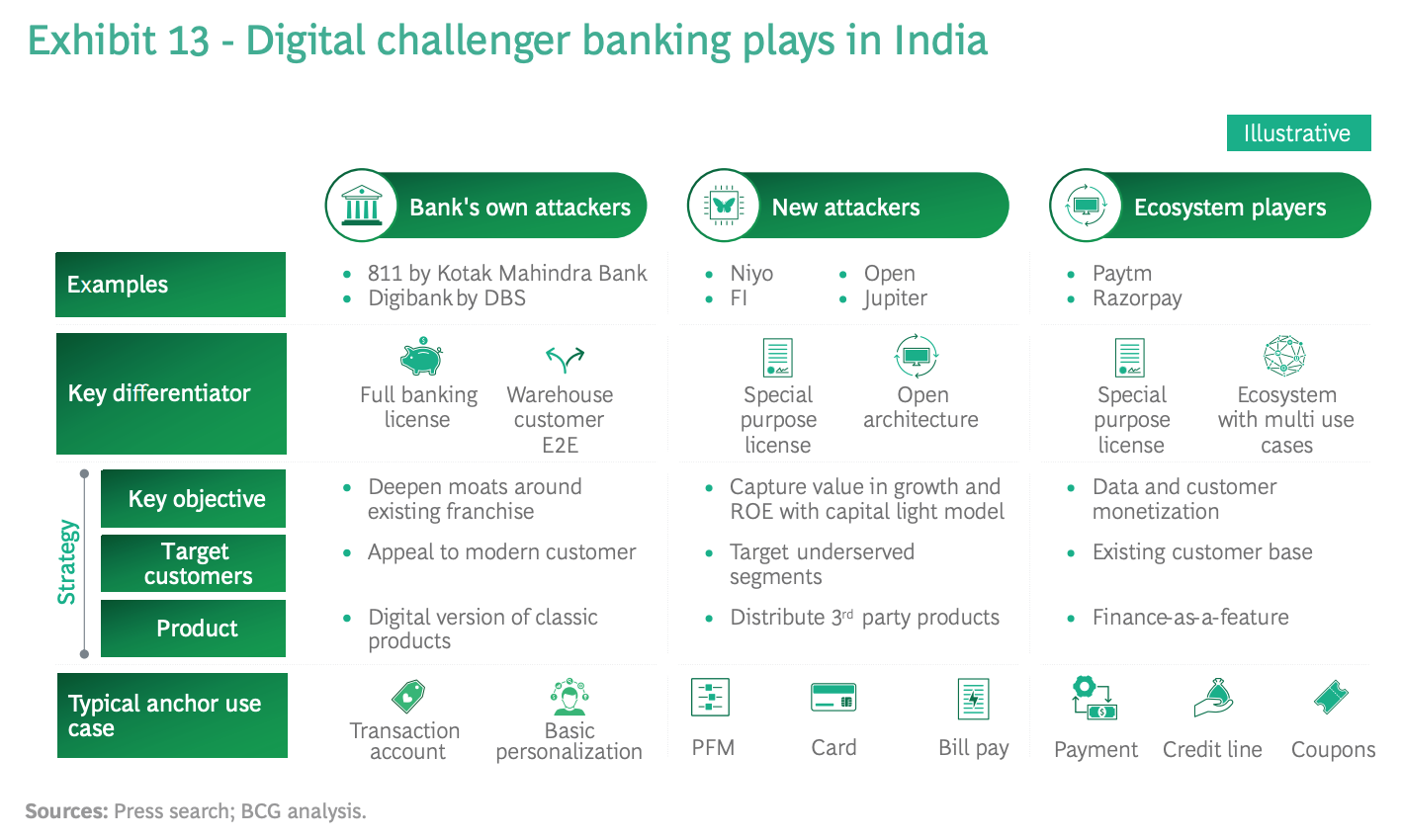India’s neobanking market has been growing at a fast pace, driven by rapid change in technology, growing levels of Internet and smartphone penetration and supportive government initiatives.
Accounting and consulting firm Grant Thornton estimates that the Indian neobanking market was valued at US$3.42 billion in 2022, a growth the company attributes to the country’s young population, with more than 50% of the population being below the age of 28, and which it says was facilitated by the India Stack, a set of application programming interfaces (APIs) spanning unique identification, digital documentation and finance.
This digital infrastructure has played a central role in the country’s digital banking growth, the company says, allowing banks, non-banking financial companies (NBFCs), fintech companies, governmental agencies and other financial services players to enable the digital, paperless and cashless delivery of services.
Grant Thornton expects the momentum to carry on this year onwards, projecting that the Indian neobanking sector will grow at a three-year compounded annual growth rate (CAGR) of 50.5% through fiscal year 2025. By then, the industry is forecasted to be worth an estimated US$11.65 billion.

Projected Indian neobank market size (by revenue) in US$ billion, Source: The banking matrix: Emergence of open and integrated neobanks, Grant Thornton Bharat, July 2022
Estimates by market and consumer data specialist Statista also offer a positive outlook, projecting that user penetration of neobanking will grow to 1.4% by 2027, rising from just 1% in 2023. By 2027, the sector is set to serve more than 21 million users, the company predicts.
One key driver of this growth will be the micro, small and medium-sized enterprise (MSME) segment, Grant Thornton says.
India is home to over 63 million SMEs, which contribute to about 30% of the country’s gross domestic product (GDP). Yet, despite their critical role in the local economy, MSMEs struggle to secure funding from commercial banks. This market is well positioned to embrace neobanking, the firm says.
Innovative startups have emerged over the past years to provide consumers and businesses with seamless digital experiences, low-cost structures and several value-added services in addition to banking products, it says. Many of them are enabling credit penetration among underserved and unserved small business niches, helping small business owners and entrepreneurs capitalize on India’s growing digital economy and achieve rapid growth.
India’s neobanking market
Compared with more mature markets like the European Union (EU) and China, the Indian neobanking sector is rather nascent and all major players have launched their products in the last two years, Swapnil Bhaskar, head of strategy at local neobanking startup Niyo, told Business World in an interview last year. Considering that neobanks have just started in India, the market is looking at more than 100% year-on-year (YoY) growth though on a low base, he said.
Jasmin B Gupta, the co-founder and CEO of LXME, an Indian neobank exclusively for women, estimates that about 36 neobanks are operating in the country, showcasing that entrepreneurs and market participants have recognized the opportunity and flocked into the market en-masse.
Boston Consulting Group identifies three main types of strategies emerging in the Indian digital banking sector. First, banks like Kotak Mahindra Bank and DBS are launching their captive challenger entities to meet changing customer expectations, enhance agility and innovation and expand their user base.
Second, pure players like Niyo, Freo and Jupiter are entering the market to provide a modern and seamless customer experience, greater speed and convenience, and more competitive pricing and transparent fees. These companies partner with licensed banks to offer differentiated banking services to specified target segments such as MSMEs, women and millennials.
Finally, the third strategy outlined by the consultancy is the existing digital finance ecosystem players with large customer base and multiple use cases that are expanding into digital banking as an added feature. These players include names like Razorpay and Paytm.

Digital challenger banking plays in India, Source: Boston Consulting Group, June 2021
Popular neobanks catering to consumers include Niyo, a neobank that provides digital savings accounts and other banking services to largely salaried individuals in India and which claims over six million customers; Jupiter, a neobank licensed as a NBFC that serves more than two million customers; Freo, which clocks 1.5 million customers; and Fi Money, a neobanking platform designed for working professionals that count one million customers.
In the SME neobanking space, prominent players include RazorPayX, the business banking platform of paytech firm Razorpay which served about 15,000 companies in April 2021; and Open, a neobanking platform for SMEs and startups which serves more than 2.3 million businesses.
In November 2014, the Reserve Bank of India introduced guidelines for issuing licenses to set up new banks in the country, including licenses for digital or “payments” banks.
Under these guidelines, these so-called payments banks are allowed to provide limited banking services primarily focused on payments and remittances and can accept deposits from individuals and small businesses. They are, however, not permitted to undertake lending activities.
Recent reports have suggested that the government is now considering the introduction of new rules that would permit digital banks to provide business loans entirely digitally. The regulation would be aimed at allowing MSMEs to secure and obtain digital credit more easily.
Featured image credit: edited from Freepik
- SEO Powered Content & PR Distribution. Get Amplified Today.
- PlatoAiStream. Web3 Data Intelligence. Knowledge Amplified. Access Here.
- Minting the Future w Adryenn Ashley. Access Here.
- Buy and Sell Shares in PRE-IPO Companies with PREIPO®. Access Here.
- Source: https://fintechnews.sg/72636/fintech-india/india-neobanking-sector-poised-for-50-5-annual-growth-through-2025/




